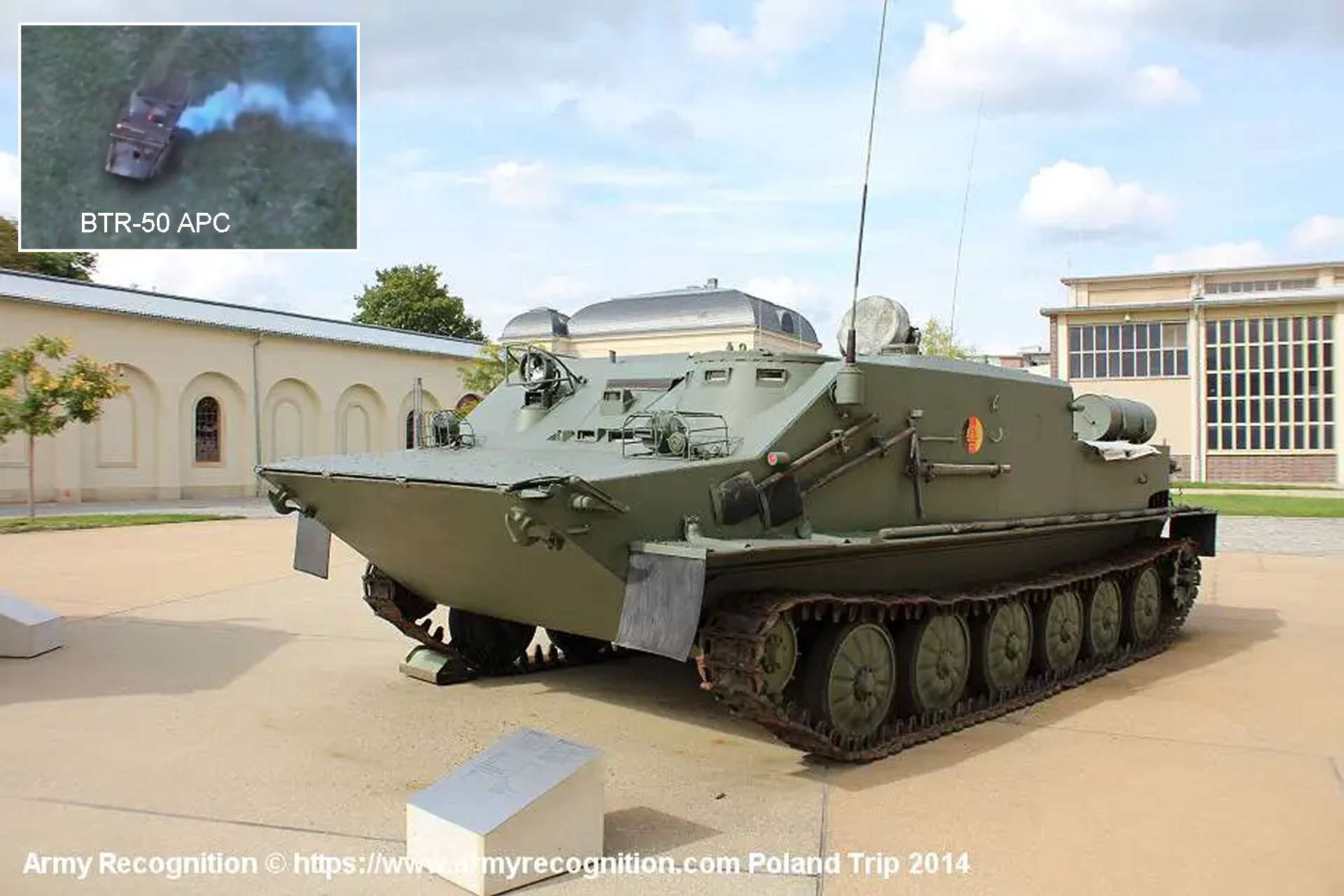Breaking news
Russia Uses Soviet-era BTR-50 Armored Personnel Carriers Amid Combat Vehicle Losses in Ukraine.
In Ukraine, the significant losses of combat vehicles within the Russian army have forced it to rely on outdated equipment, such as the BTR-50 armored vehicle. A video posted on Telegram on May 19, 2024, showcased a BTR-50 being destroyed by a drone on the Ukrainian front, underscoring the vulnerabilities of using such antiquated military hardware in modern warfare.

Soviet-era BTR-50 Armored Personnel Carrier (Picture source: Army Recognition and Telegram)
Due to considerable losses exceeding 9,600 combat vehicles, including tanks and armored vehicles that were destroyed, damaged, abandoned, or captured, the Russian armed forces have had to dip into their stocks of old military equipment, including tanks and armored vehicles from the 1960s.
The increased use of these antiquated vehicles by Russian forces is seen as a clear sign of the wear and tear on their material resources, as the conflict enters its 28th month. Russia struggles to replace its losses with modern vehicles, forced to rely on reserves of equipment dating from the 1980s or earlier.
However, the BTR-50P, a vehicle notable for its era-specific tactical and technical attributes, has reemerged as an option considered by Russia due to the current obsolescence of these armored personnel carriers.
With Russian military production facilities now facing intense demands to manufacture modern military hardware like tanks and self-propelled howitzers, the production lines for armored personnel carriers are under strain. In light of these pressures, turning back to the BTR-50P—an already existing platform—appears as a feasible solution to fulfill the urgent need for more armored transport vehicles.
Having been in active service for over seventy years, the BTR-50P retains several advantages despite its antiquity. It boasts a capacity for up to 20 paratroopers or can transport significant ammunition loads, offering greater capacity than some newer tracked vehicles such as the MT-LB, which holds only 11 people, or the MT-LBu with a capacity for 8 soldiers. It even surpasses the capabilities of more modern wheeled armored personnel carriers like the BTR-80 or BTR-90, each of which can carry 10 people.
Furthermore, the BTR-50P's proven off-road and amphibious capabilities make it adept for a variety of operational contexts, an essential trait for military vehicles engaged in operations across Ukraine.
The BTR-50 is a Soviet-era amphibious armored personnel carrier, first introduced in the late 1950s. Designed to transport infantry troops and equipment across water obstacles and provide fire support during combat operations, the first version of the vehicle, the BTR-50P, had an open troop compartment while the BTR-50PK was equipped with a fully enclosed troop compartment.
The BTR-50 APC is armed with a 7.62 mm machine gun mounted on a rotating turret, with an additional 7.62 mm machine gun installed on the roof, and is also equipped with smoke grenade launchers for concealment.
Amphibious, the BTR-50 moves through water at a speed of 8 km/h (5 mph) using its water-jet propulsion system powered by the vehicle's engine, and reaches a maximum speed of 80 km/h (50 mph) on land.
The BTR-50PU, a command variant of the BTR-50 armored personnel carrier, was developed in the 1960s in the Soviet Union. The "PU" in its name stands for "Punkt Upravleniya," or "command point" in Russian.
Designed to serve as a mobile command post and communications center for military operations, the BTR-50PU can accommodate a crew of six and up to five staff officers, along with their communication and command equipment.
The BTR-50PU is equipped with a powerful radio system, map boards, and other communication and navigation equipment necessary for commanding troops during operations. It also features a telescopic mast to enhance communication reception and transmission.
Armed with a 7.62 mm machine gun for self-defense, the primary role of the BTR-50PU is not combat but rather as a mobile command center for coordinating and directing military operations.


























